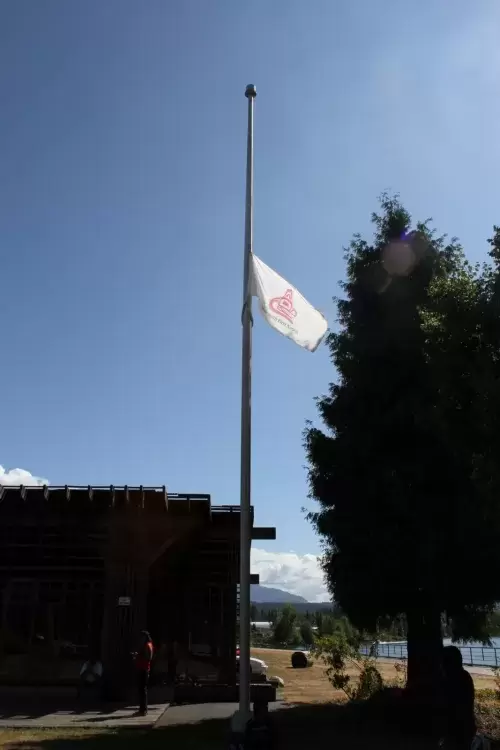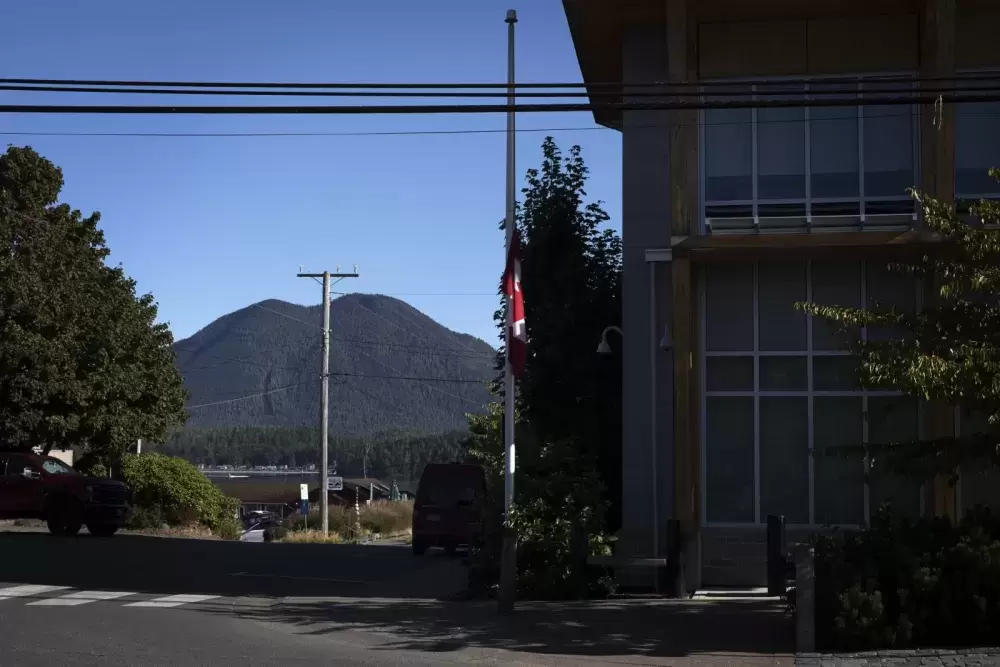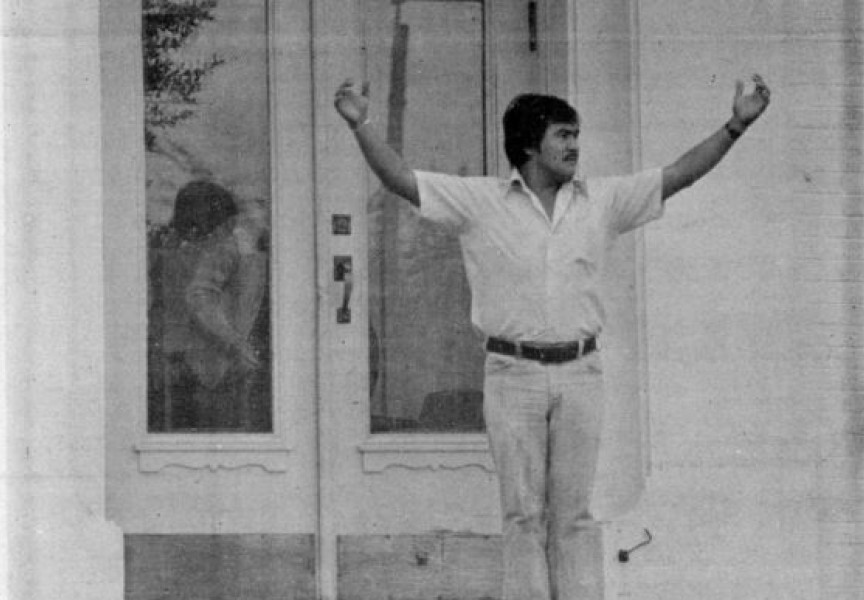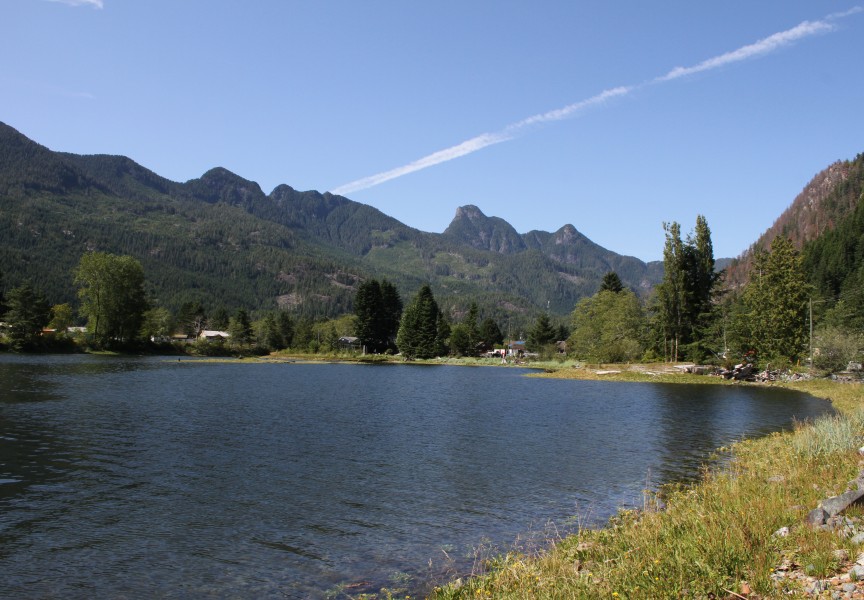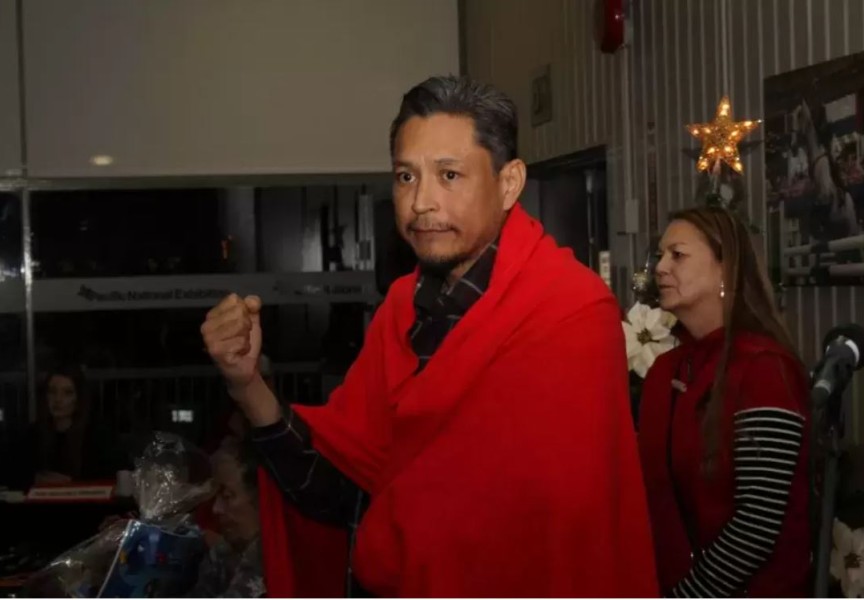After the remains of 215 children were found buried in unmarked graves at the site of the former Kamloops Indian Residential School in May, Liberal Leader Justin Trudeau ordered that Canadian flags on federal buildings be flown at half-mast.
Now, it’s time for them to be raised, said Conservative Leader Erin O’Toole.
“I do think we should be proud to put our flag back up,” he said while speaking to reporters in Ottawa on August 26. “It's not a time to tear down Canada – it's a time to recommit to build it to be the country we know it can be.”
While O’Toole said Indigenous reconciliation is important and that Canadians owe it to “First Nations to provide a path to healing,” his remarks sparked controversy among west coast leaders who say that raising the flags while people are still grieving would be a sign of disrespect.
“I think it would be extremely disrespectful for Canada to raise their flags at full-mast during a time of uncovering such traumatic truths,” said Nuu-chah-nulth Tribal Council Vice-President Mariah Charleson. “We can’t belittle the Indian residential school [system]. We have to acknowledge this truth and the findings of this truth.”
Since the discovery in Kamloops, the Lower Kootenay Band announced that a search revealed another 182 unmarked graves at the site of the former St. Eugene's Mission Residential School, near Cranbrook. The Cowessess First Nation said it found 751 unmarked graves near the former Marieval Indian Residential School, in Saskatchewan, and the Penelakut Tribe reported finding more than 160 unmarked graves at the site of the Kuper Island Indian Residential School off Vancouver Island.
“We’re still in a grieving period,” said Charleson. “We’re still looking for answers. And our families and communities still wait for that important work to be done.”
The Canadian flags in front of Tofino’s municipal office and fire hall have remained at half-mast since Trudeau’s order.
Tofino's Acting Mayor Britt Chalmers said that due to Tofino’s proximity and close relationships with Nuu-chah-nulth nations, the municipality doesn’t feel ready to raise their flags.
“We’ll be looking to local First Nations leadership for guidance on when it would be appropriate [to raise the flags],” she said.
In Ucluelet, the Canadian flags in front of the Pacific Rim Visitor Centre, the District of Ucluelet office and the fire hall were lowered for 215 hours following Trudeau’s order.
They have since been raised to full-mast, after consultation with the Yuułuʔiłʔatḥ Government, according to Ucluelet Mayor Mayco Noel.
On June 19, three days before National Indigenous Peoples Day, Ucluelet First Nation’s flag was raised to full mast at the visitor centre and now flies next to the flag of British Columbia and Canada.
Noel said it’s “right where it belongs” and plans to invite other Nuu-chah-nulth nations to raise their flags alongside Yuułuʔiłʔatḥ’s.
It signals to visitors that the gateway to the west coast is through Nuu-chah-nulth territory, he said.
Courtenay-Alberni NDP candidate Gord Johns said that lowering the flags at half-mast is a small but important symbol that shows “we’re not looking away.”
“Some Canadians need to get rid of that ‘get over it’ attitude,” he said. “Canada needs to show a signal to the world that we're in mourning over children that never made it home.”
By keeping the flags lowered, Johns said it ensures conversations around truth and reconciliation don’t just “slip away.”
Although consensus about when to raise the National Flag of Canada varies, Charleson said that Indigenous leaders should have a say on whether flags are flown at half-mast in their traditional territories.
“We cannot move forward unless we know the truth,” she said. “I’m hoping that the conversation continues – that our educators and people at all levels of society continue to look at this as an opportunity to learn the true history of this country that we call ‘Canada.’”

